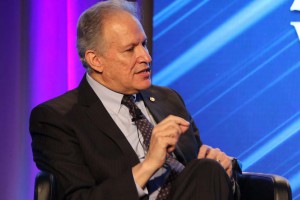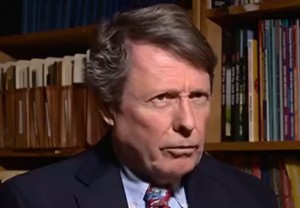
NHTSA Administrator Mark Rosakind is an advocate for autonomous vehicles, believing they can improve safety on U.S roadways.
With the first semi-autonomous vehicles already on the road, industry watchers suggest fully self-driving vehicles could start rolling into showrooms by 2020, perhaps even sooner. But there are some key obstacles in the way, and not all of them are technological.
The National Highway Traffic Safety Administration hopes to address one of the most significant roadblocks by introducing new federal guidelines overseeing development of automated vehicles, and it will hold a first public hearing on Friday.
NHTSA Administrator Mark Rosekind has suggested that the use of autonomous vehicles could eventually eliminate highway deaths in the U.S., and wants the agency to help promote development of the technology. But there are plenty of skeptics who plan to attend this week’s meeting, including some safety experts who want to slow the process down.
Among those who plan to attend will be former NHTSA Administrator Joan Claybrook, who is president-emeritus of Public Citizen, and Clarence Ditlow, executive director of the Center for Auto Safety.
(Ford adds active cruise to traction assist to 2017 Fusion. For more, Click Here.)
In a statement ahead of the Friday hearing, they point to the fact that Google, considered to have the most advanced autonomous vehicle development program, has still run into a variety of problems. It has experienced nearly 20 crashes, though all but one were blamed on other drivers. But they also cite reports showing that during a 15-month period, the self-driving system aborted 341 times, forcing the human back-up driver to intervene.
A variety of factors caused those problems, ranging from bad weather to other reckless drivers, as well as hardware or software failures.
Warning not to let Google “blow by” federal safety rules, Harvey Rosenfield, founder of Consumer Watchdog, contends that, “NHTSA’s job is to make sure the nation’s streets and highways are safe for motorists and pedestrians, not to promote robot cars or help Google’s lobbyists circumvent the law. Before jumping on board the Google express, NHTSA should initiate a serious and careful public investigation into autonomous vehicles.”

Clarence Ditlow, executive director of the Center for Auto Safety, wants to see a cautious approach taken to the use of self-driving cars in the U.S.
How fast NHTSA will come up with new guidelines, and how far they will reach, is yet unclear, though U.S. Transportation Secretary Anthony Foxx has said he hopes to have new rules in place within a matter of months.
(Click Here to find out what’s pushing driving costs to a six-year low.)
“Technology can help us” reduce highway deaths, Foxx said, during a meeting in Washington last week.
Foxx and Rosekind have taken proactive positions on smart car technology. During two separate sessions at the Detroit Auto Show in January, they announced steps meant to bring advanced safety systems into widespread use quicker than might be possible through the normal rulemaking process. They also announced plans to reduce regulatory hurdles to developing autonomous vehicles.
Six weeks after meeting with senior executives at BMW, for example, NHTSA lifted rules that barred BMW from testing its prototype valet parking system, a technology that would allow passengers to exit the vehicle then allow it to find a parking spot on its own.
Separately, NHTSA has declared the artificial intelligence system used by Google’s prototype vehicles can be considered the equivalent of a human driver. But precisely what that means has yet to be clarified.
(To see more about the fatalities from Takata’s exploding airbags, Click Here.)
So far, only a handful of states, including Nevada, Michigan, California and Florida, have actually set down their own rules on self-driving cars. Observers caution that some form of national guidelines will be necessary to continue the development of autonomous vehicles. This week’s hearing will help NHTSA decide how far to go with the rules it plans to enact.
